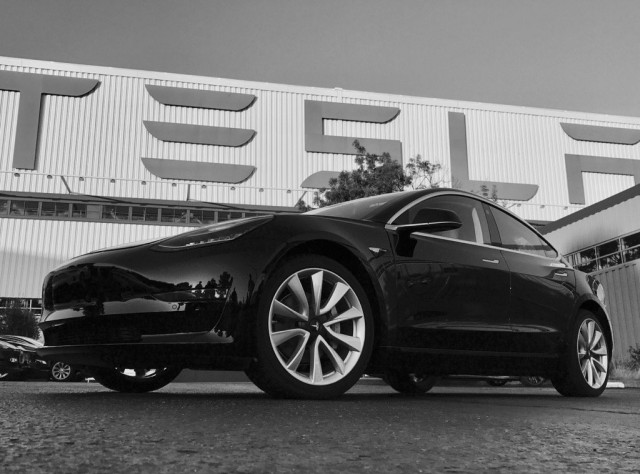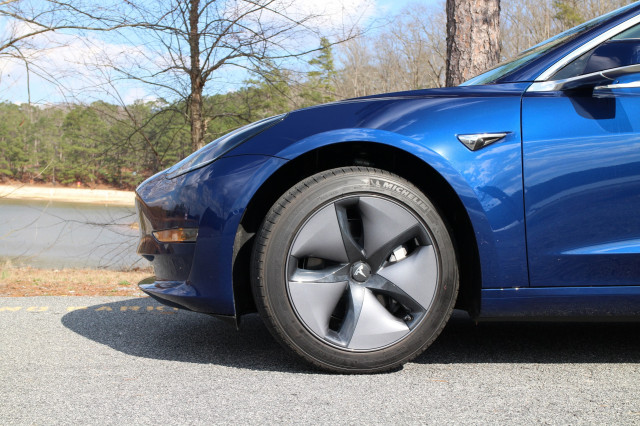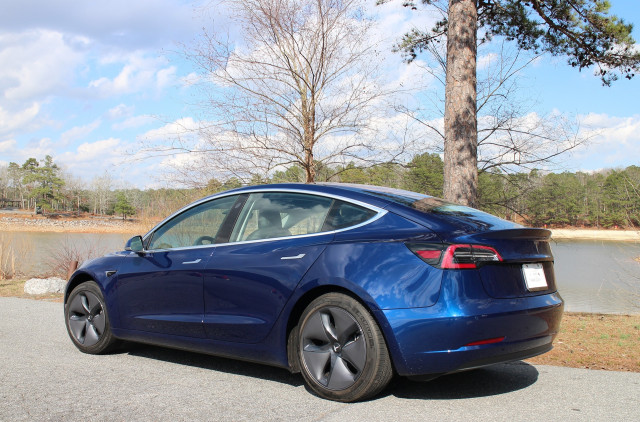Follow John

2017 Tesla Model 3 “first production” car, in photo tweeted by Elon Musk on July 9, 2017
Tesla reported Tuesday that it built 34,494 electric cars in the first quarter of 2018, by far its largest quarterly production total ever.
But all eyes were on one number: the production of Model 3 sedans, which was 9,766 vehicles out of that total.
Of the rest, 11,730 were Model S hatchback sedans and 10,070 were Model X crossover utility vehicles.
DON’T MISS: 2018 Tesla Model 3 Long Range: first drive review of 310-mile electric car
For more than eight months after the first Model 3 cars were delivered to buyers at the end of July 2017, Tesla has struggled to get Model 3 production rates up to the numbers promised by CEO Elon Musk.
In July, he tweeted that the company would be building 2,500 cars a week by the end of September and 5,000 a week by December 31.
Then “production hell” intervened, likely due to the company’s very short development cycle and its risky decision to forgo pre-production tooling tests and start building cars on final tooling directly.
Tesla didn’t meet that 2,500-per-week number by the end of last week; the final number built at the end of the last seven days was 2,020 Model 3s. The quality of those cars, it said, was “at the highest level we have seen across all our products.”
Over the next seven days, it continued, it expects its Fremont assembly plant to build a combined total of 2,000 Model 3s, plus 2,000 of the older Model S and Model X vehicles.
The company expects the Model 3 production rate to “climb rapidly through Q2,” it said. And it is sticking with its target of “approximately” 5,000 Model 3s a week in “about” three months, according to its press statement.
CHECK OUT: 2018 Tesla Model 3 – full review
Tesla said it had “rapidly” addressed bottlenecks in its supply chain and production process. It shut down its factory several times for short periods to upgrade production equipment.
The company credited its production team, noting that Model 3 production had exceeded combined production of the two larger, pricier cars in nine months.
Not all of the cars built in the last quarter representing deliveries to paying customers; those totaled 29,980 vehicles, “of which 11,730 were Model S, 10,070 were Model X, and 8,180 were Model 3,” according to the company.

2018 Tesla Model 3 Long Range electric car, road test in greater Atlanta area, Feb 2018
2018 Tesla Model 3 Long Range electric car, road test in greater Atlanta area, Feb 2018
2018 Tesla Model 3 Long Range electric car, road test in greater Atlanta area, Feb 2018
2018 Tesla Model 3 Long Range electric car, road test in greater Atlanta area, Feb 2018
While Tesla is known for missing its vehicle deadlines, the more important question is whether the higher production is both sustainable and delivering cars of sufficiently high quality.
Tesla’s release stressed the overall satisfaction of Model 3 buyers, likely in an effort to counter widespread commentary on build-quality problems and delivery flaws observed by Model 3 buyers over the first several months.
“Our initial customer satisfaction score for Model 3 quality is above 93 percent,” Tesla said, “which is the highest score in Tesla’s history.”
READ THIS: Tesla Model 3 quality is terrible, but will it matter to buyers?
As is customary for the 15-year-old Silicon Valley electric-car maker, the new production totals were accompanied by some drama.
A March 23 e-mail from a Tesla engineering chief Doug Field that was leaked to Bloomberg said he found criticism of the Model 3’s quality “personally insulting,” and to employees, “you should too.”
“Let’s make them regret ever betting against us,” Field continued. “You will prove a bunch of haters wrong.”

2018 Tesla Model 3 Long Range electric car, road test in greater Atlanta area, Feb 2018
Another e-mail dated March 23 from a different Tesla manager stated that it would be an “incredible victory” if the company could hit a production run rate of 2.5K per week by March 31.
That didn’t happen, and a subsequent report suggested that CEO Musk had resumed sleeping in the Fremont assembly plant during the last days of the quarter.



